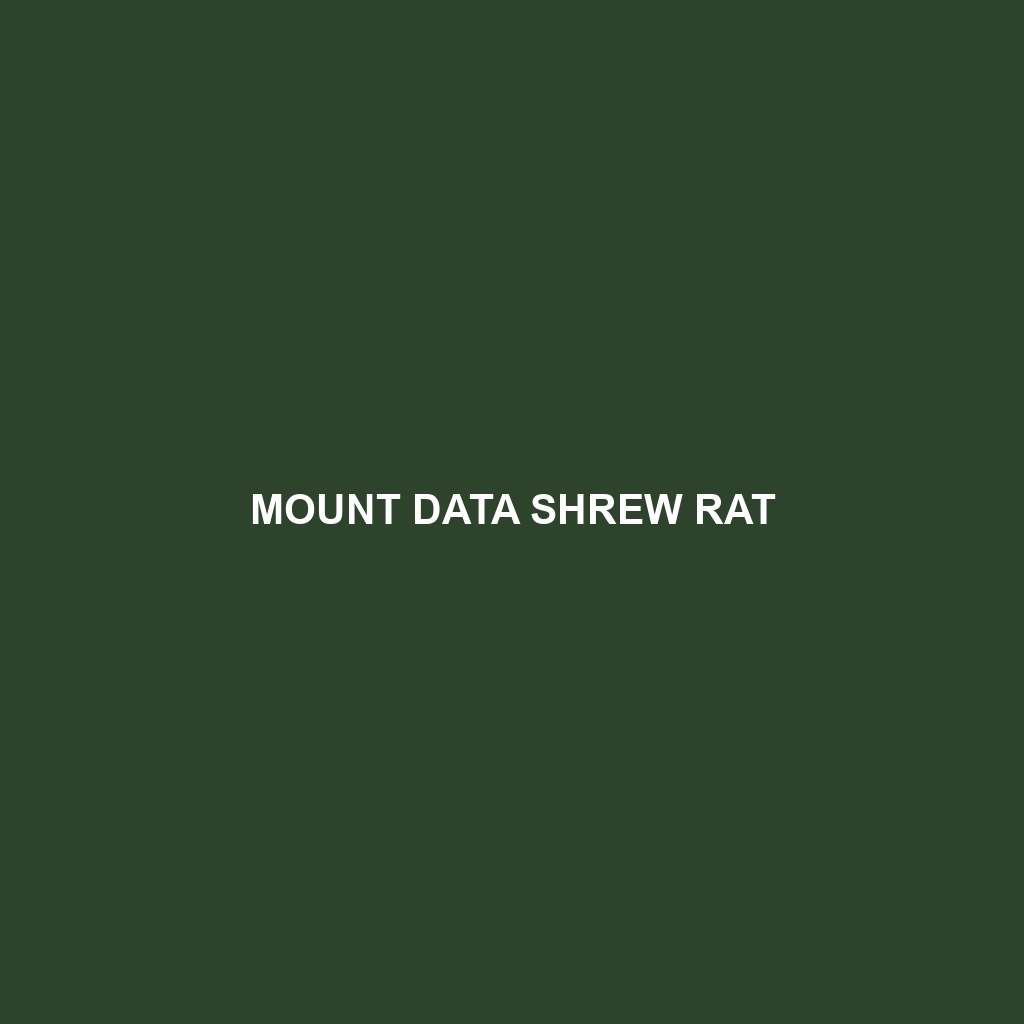Mount Data Shrew Rat
Common Name: Mount Data Shrew Rat
Scientific Name: Chrotomys gonzalesi
Habitat
The Mount Data Shrew Rat is primarily found in the lush forests of the northern Philippines, specifically on the island of Luzon. This species thrives in montane environments, characterized by high elevation, cool temperatures, and a rich diversity of flora. Its habitat is typically dense and moist, providing an ideal setting for its survival and foraging activities.
Physical Characteristics
The Mount Data Shrew Rat exhibits distinctive physical traits that make it easily recognizable. Adults typically measure between 25 to 32 centimeters in length, including a tail that can be slightly shorter than the body. Its fur is generally soft and dense, presenting a dark brown coloration interspersed with lighter hues, offering excellent camouflage among its forest surroundings. Notably, this species features large, expressive eyes and a pointed snout, with large feet adapted for climbing.
Behavior
This rodent is primarily nocturnal, actively foraging at night. Mount Data Shrew Rats are known for their agility in climbing, and they often build nests in tree hollows or dense vegetation to evade predators. They demonstrate a unique behavior of using scent marking to communicate and establish territory, making them interesting subjects for observation and study.
Diet
As an omnivorous species, the Mount Data Shrew Rat has a diverse diet that includes fruits, seeds, insects, and small invertebrates. This varied diet allows them to adapt to seasonal changes in food availability. Their foraging behavior often involves rummaging through forest litter and climbing trees to access ripe fruits and tender leaves.
Reproduction
The reproductive habits of the Mount Data Shrew Rat are fascinating. Breeding typically occurs during the rainy season, with females producing one to three litters per year. Each litter consists of two to five offspring, which are born hairless and blind. Maternal care is significant, with mothers nursing and protecting their young until they are ready to mature and fend for themselves, usually around six weeks of age.
Conservation Status
The current conservation status of the Mount Data Shrew Rat is classified as vulnerable due to habitat loss from deforestation and agricultural expansion. Conservation efforts are crucial to protect not only this species but also the rich biodiversity of the mountainous regions of Luzon.
Interesting Facts
One intriguing fact about the Mount Data Shrew Rat is its unique ability to adapt to varying altitudes. This adaptability allows it to thrive in different mountainous terrains. Additionally, it is one of the few rodent species that exhibits a significant level of social behavior, often seen communicating and interacting with others in their habitat.
Role in Ecosystem
The Mount Data Shrew Rat plays a vital role in its ecosystem as both a seed disperser and a prey species. By foraging on fruits and seeds, it aids in plant propagation and contributes to the ecological balance. Its presence in the food web is essential, providing nourishment for larger predators while also influencing the population dynamics of the plant species within its forest habitat.
